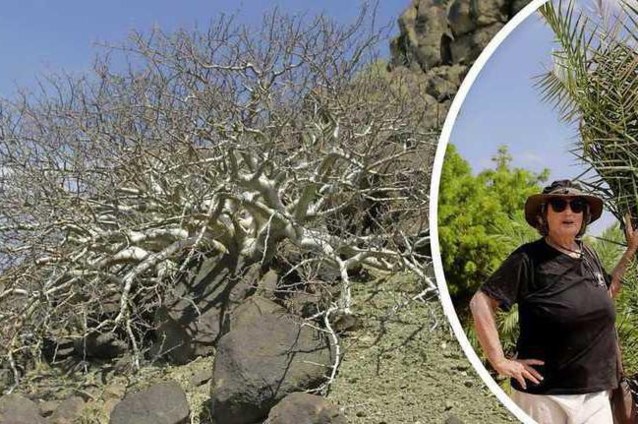During an archaeological dig in the lower Wadi el-Makkuk region north of Jerusalem, according to CNN determined that the old seed was untouched. The scientists could not identify the type of tree based on the seed alone.
The team, led by Dr. Sarah Sallon, a physician who founded a research center at Hadassah University Medical Center in Jerusalem, planted the seed more than a dozen years ago to investigate it further.
According to Sallon, it is possible that the tree is the source of the Biblical ‘tsori’. This is a medicinal plant extract associated with the historic region of Gilead north of the Dead Sea in Jordan’s Rif Valley.
Secrets about the origin
It wasn’t until twelve years after the seed was planted that the scientists were able to publish their study. The cause? “We planted the seed in 2010 and it’s now 2024. The reason we waited so long to publish it is because I wanted to make sure it wasn’t the Judean balm. And how would I know that definitively? By smelling,” says Sallon in a study published in the journal in September this year Communications Biology.
The tree, which is now more than fourteen years old, nicknamed Sheba and stands almost three meters high, has not yet blossomed or borne fruit. This makes it more difficult to identify the tree, the study says. Based on historical research, Sallon suspected that the tree might be the source of what ancient texts from the region, including the Bible, call the “Judean balm” or “balm of Gilead”: a fragrant resin harvested to make a to make perfume that was exported all over the world at the time.
But that smell never came. Instead, the team discovered some compounds known for their medicinal use, including guggulterols’, which have been identified from the resin of the related tree species Commiphora wightii and have potential anti-cancer properties.
To grow
The special seed from the Judean desert was mixed in water with hormones and fertilizer. Then it was planted in a pot with sterile soil. “About five and a half weeks later, a nice little shoot came up,” Sallon said.
The top of the shoot was protected by a kind of cap, called an operculum. After it shed, the team used carbon on the organic matter to estimate the age of the plant. The outcome was that the specimen was dated between the years 993 and 1202.
Shortly afterwards the tree grew leaves and began to grow further. Sallon shared photos of the tree with botanical scientists around the world. An expert suggested that it could belong to the genus Commiphora. That group includes about two hundred tree species that mainly occur in Africa, Madagascar and the Arabian Peninsula.
Treasure chest of medicinal compounds
Sallon then shared a sample of the sheet with study co-author Dr. Andrea Weeks, associate professor in the department of biology at George Mason University in Fairfax, Virginia. Weeks examined the tree’s DNA, which confirmed the tentative identification. However, the sample did not match any of the known Commiphora species in her database.
“Based on all these things, it is not the Balm of Judea, but a close relative of it, and one of the non-aromatic Commiphora that constitutes a treasure trove of medicinal compounds,” Sallon said. Because of the presence of these healing substances, Sallon and her colleagues concluded that the tree may have been the source of a medicinal balm known as tsori, which is also mentioned in historical texts.
